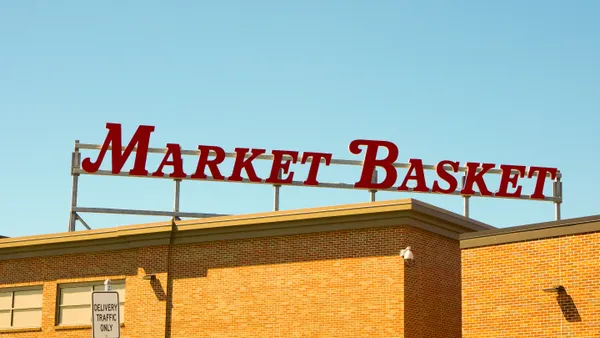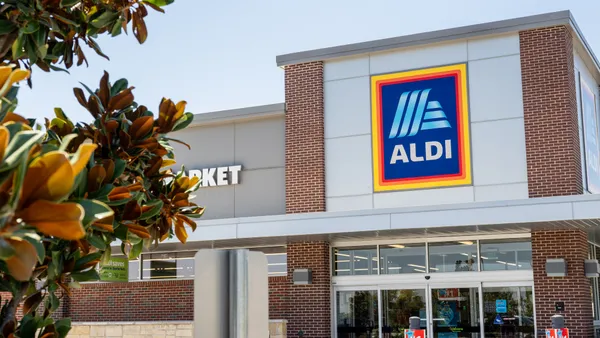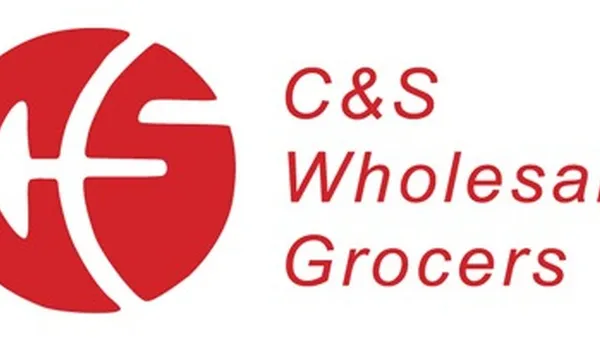"On Special" is a monthly look at top store categories and the retailers that specialize in them.
Lidl wants to be known as a grocer with crazy-low prices and a premium image. Arguably no department works harder to advance that narrative than wine, where customers can find a selection curated by a rarified in-house expert for typically less than $15 a bottle.
The grocer doesn’t sell wine in all of its stores (sorry, New Jersey). But in markets where it does, customers can find frequent sales, a rotating seasonal assortment, special endcaps and a push to buy in bulk.
"We organize our wine selections to be intuitive and exciting, and customers can pick any bottle on our shelves and shop with confidence that they’re getting a great pick at a great price," Lidl spokesman Will Harwood told Grocery Dive.
 What’s trending?
What’s trending?
Lidl rolls out seasonal "Wine Fair" promotions that spotlight varietals from countries like France and Italy. This summer, the discounter ran an Italian Wine Fair that included a Barolo DOCG Riserva 2012 — a varietal from the Piedmont region that must be aged for at least five years. To coincide with the limited release, Lidl rolled out 40 Italian food offerings including tomato-mozzarella bratwursts and burrata pizza.
Harwood said by the end of this year, Lidl will have introduced 80 new wines through its various promotions.
 Best-sellers
Best-sellers
Lidl declined to comment on strategy and sales in the department, but according to Silicon Valley Bank's annual state of the wine industry report, consumers are willing to spend more now than in years past. Dollar sales and volume of wine priced below $9 a bottle dropped 9% across the twelve months ended November 2018. Wine priced above $9, on the other hand, grew 4.1% in dollar sales and 3% in volume.
A cornerstone category, where available
Bill Bishop, chief architect at Brick Meets Click, said wine is a "cornerstone" department for Lidl that leverages the company's deep sourcing roots abroad. It's also a way for the discounter to draw affluent consumers and to burnish its premium image.
However, in states like New York, where supermarkets can't sell wine, and New Jersey, where most can't, Bishop said it may struggle to establish that premium positioning. Lidl currently has five stores in the Garden State and a location in New York's Staten Island Mall. Early next year, the company will open its first four stores on Long Island following its acquisition of Best Market in late 2018.
"They’re a little hamstrung in their ability to attract the demographics they feel like they should attract in those areas," he said.
Master of the department
Lidl employs a Master of Wine, Adam Lapierre, and makes him a visible part of the department’s marketing. The company says it's the only grocer in the U.S. to employ someone with this title, of which there are only around 50 in the U.S. and 400 worldwide.
"Adam tastes every bottle on our shelves, in addition to rating them and advising in the selection process," Harwood said. "This complements the depth of experience Lidl brings through our European background and retail operation, including our international wine expos."
Bishop said customers and other retailers may not fully appreciate the level of expertise Lidl is bringing to its sourcing and customer-facing efforts.
"To have that kind of hyper-expertise implies the wine category is something quite special," he said. "You're talking about the expert’s expert."
Promoting bulk buying
Lidl regularly promotes savings of 30% on wines when customers buy six or more bottles. The Barolo Riserva that was the showpiece of its Italian Wine Festival retailed for $14 a bottle when purchased in bulk. Likewise, bottle pricing for Lidl's "Spring Sippers" collection, which launched back in March, topped out at $14 for any six-or-more order across the 12 new wines.
In its most recent circular, the discounter offered 30% off a grouping of four wines, including an Outlook Bay pinot noir and a Velada moscatel, for shoppers who bought a half dozen or more.
A store stalwart
Joseph Condon, 71, a retired finance and accounting professional, said that just about every department in the Lidl he visits on West Broad Street in his hometown of Richmond, Virginia, has shifted around since he began shopping there two years ago.
"I'll walk in and find peanut butter where the potato chips used to be," he told Grocery Dive.
The wine department, though, has maintained its positioning and size within the store, Condon said. He appreciates that reliability and will often venture in to check out the wine specials, then get his grocery shopping done while he's at it. He often sees endcaps promoting weekly wine specials.
Bishop said keeping the department as a store anchor shows just how important wine is to Lidl's overall strategy.
"I think that speaks to the expertise and the confidence they have in that department," he said.
The ratings game
Condon doesn't like sweet wine. So he relies on a rating system Lidl puts on its wine labels that indicate the level of sweetness, dryness and other attributes in each bottle.
"At other retailers it will say, 'moderately sweet' or 'robust red' but you've got to read through the whole label description to find that," Condon said.
Lidl also rates its wines according to an internal 100-point system, with no wine falling below the 80-point threshold. Any wine 95 points or above Lidl notes as a "classic" selection shoppers should "add to your collection," while wines at the lower end, ranging from 80 to 84 points, are marketed as "good," recommending shoppers "unwind with it."
The discerning customer
According to a 2017 survey by Field Agent, 41% of regular Lidl shoppers who purchase alcohol say they buy wine from the discounter, while 30% say they buy beer.
Condon prefers to buy red wine from one of the two local wine clubs he and his wife belong to. But he’ll frequently buy white wine from Lidl, noting the quality is good and the prices "are hard to beat." Condon and his wife like the Sierra Pines Pinot Grigio and the Skippers Knot Chardonnay. The latter retails for just over $4, and Condon said he likes to wait for a sale that drops the price below $3.
"I’ll pick up a case or two whenever that happens," he said.
The state of retail wine
- Sales of wine priced above $10 are projected to grow between 4% and 8% in 2019, according to the Silicon Valley Bank's authoritative "State of the Wine Industry" report. Wine priced below $9, which saw sales decline 9% last year, is expected to retreat further this year.
- Baby boomers spend the most of any demographic on wine, but as they enter retirement and begin living on fixed incomes, according to Silicon Valley Bank's report, their overall consumption is declining.
- Millennials, meanwhile, have yet to pick up the slack. According to the report, "They lack financial capacity, currently prefer premium spirits and craft beers, and have been slow getting into careers."













